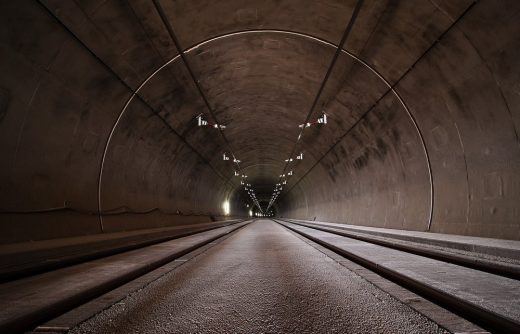8 tips to choose the right construction materials for your project, Building environmental impact advice
8 Tips to Choose the Right Construction Materials for Your Project
5 May 2023
A building is not just steel and concrete, but a projection of a powerful thought that was shaped with professional care.
To ensure the success of your project, select the right construction materials. The materials you choose can determine the quality, safety and overall cost of your project. When selecting materials, it’s important to consider the environmental impact, and the intended purpose of the material.
Each construction material, from brick and concrete to steel and timber, will have different properties that make it best suited for specific applications. It is imperative that we do the necessary research and select the right material for the job.
1. Cost of the Building Material
Buying quality materials versus cost is a significant consideration as an architect when you have a project. When shopping around for building supplies, you’ll find that prices might range significantly. The golden rule of shopping for the lowest price isn’t always applicable. The products’ usefulness or longevity must be considered. Investing in low-quality materials can lead to pricey maintenance needs over time.
When selling to architects, materials providers must understand their unique value proposition and what to emphasize. Working within a tight budget, architects want to ensure they are getting the most value for their buck. Suppliers need to be cognizant of the cost of the materials, services and products they are offering in order to remain competitively priced.
Choosing materials that guarantee durability enables you to save money in the long run, as the associated cost of these materials is an essential consideration when selecting them for construction – since it will ultimately decide how secure the structure is.
2. Climate Affects the Design of Construction Materials
The climate is a factor that architects must consider when choosing building materials. Essential factors to consider in materials are the following:
- The annual average temperature
- The amount of daylight
- The amount of precipitation or snowfall
- The ventilation needs of the area
Climate has a significant impact on construction materials and their use in architecture. Different climates bring varying levels of humidity, temperature, and precipitation that can all affect the suitability of certain types of materials.
In hot and humid climates, the use of moisture-resistant materials with superior insulation properties should be considered to reduce energy demands such as air conditioning.
In colder climates, extra steps to ensure that buildings are sufficiently insulated and heated, or structures can benefit from materials with greater insulation capabilities.
In areas that experience both hot and cold temperatures, usage of materials that are able to withstand both extremes may better endure the changing climate.
3. Durability of the Construction Material
For marketing building materials, suppliers often target architects more. They show in their content how strong their material is and explain why it is worth the architects’ money. Architects must consider the durability of the building materials as a crucial factor.
When selecting construction materials, durability should be one of your top considerations. The right material can significantly improve the stability, lifespan and maintenance costs of your project.
Durable materials can withstand the effects of extreme weather, pests, rust and other wear and tear, while also providing protection from fire and other hazards. Selecting a durable material like steel or concrete can help ensure that your project holds up over time and provides the structural integrity required for its intended purpose.
Make sure to research and analyze each material carefully before making your final selection.
4. Sustainability of the Building Material
Construction is evolving rapidly, and the need for building materials is also increasing, posing a threat to our environment. As a result, sustainable and environment-friendly building materials such as bamboo, soil, fly ash, silica fume, metakaolin, rice husk, etc., benefit the environment as opposed to conventional materials.
You should also consider the installation method of these materials, as it affects their reusability. Sustainable materials are locally sourced, renewable, and recycled whenever possible. Not only are they more cost-effective and easier to maintain, but they also help reduce emissions, energy consumption, and waste as well. From bamboo flooring and recycled lumber to recycled glass countertops and linen insulation, sustainable building materials offer a variety of options for eco-friendly construction projects.
5. Availability of Materials
The viability of a project is determined by the availability of raw materials, tools, and components. It is imperative that suppliers have the capability to deliver it to the project site.
When considering the logistics of transporting construction materials, it’s vital to plan for all stages, including how to move oversized and overweight loads. Teaming up with an Oversize permits company can streamline the regulatory process, ensuring that heavy building materials arrive safely and on schedule.
A few key parameters to keep in mind would include the presence of reliable, timely, and cost-effective suppliers, ready access to the raw materials needed to make the product, or any specialized equipment that could be needed for fabrication.
Choosing locally sourced materials not only reduces the amount of time and money spent on shipping, but also enables you to adhere to your original construction schedule.Taking the time to assess each of these factors before proceeding with a project could save time and money in the long run.
6. Location
Location is often disregarded while deciding on construction supplies. However, it is the most essential factor because it can determine the building’s structural design alone. It could also significantly impact the materials’ expected strength and longevity.
For example, suppose a proposed home is located in a forested or mountainous area. In that case, you will likely avoid using wood to prevent pests and make the structure more resistant to damage. If you call a coastal area home, you might also steer clear of anything that rusts or corrodes in the presence of water and salt. ‘Setting’ is a baseline a project can utilize to establish the subsequent steps of the construction phase. Therefore it should be considered alongside climate from the beginning of the planning process.
7. Project Maintenance
One of the features of marketing for building materials is that they are easy to maintain. Maintaining a structure will help it appear as good as new years after construction. Quality
building materials typically require less maintenance than substandard or inexpensive materials.
A construction team must evaluate the durability and lifespan of the building’s materials to ensure a structure that requires minimal maintenance after completion.
A key factor to consider in determining the structure of a building is its maintenance. You should consider its use during construction and how you’ll preserve it once it has been built. Although construction would take months or years, post-construction will last decades.
8. Aesthetic Appeal of the Project
When researching for marketing building materials, you should pay attention to the aesthetic appeal of your project and what materials would suit best to achieve the desired results. It is important to consider your tastes in terms of aesthetic appeal as you explore various materials. While some people would rather move forward with delightful colors, others opt for more attractive ones. You should prioritize what is most important to you while deciding what to build.
8 tips to choose the right construction materials Conclusion
A construction project is a projection of an architect’s thoughts as what works best for the client and the building as well as the environment.
As an architect, you aim to provide the best for your customers. This will only occur if the job you completed is extremely aesthetically pleasing, long-lasting, and cost-effective. Therefore, you ought to think about picking the best supplier of building materials for your undertaking. Knowing which supplier to choose and how to choose them can give you a significant advantage.
After finishing this essay, you will undoubtedly be knowledgeable enough to select the best construction material. You now have eight suggestions to keep in mind while you look for high-quality resources.
Comments on this guide to 8 tips to choose the right construction materials article are welcome.
Building Construction Design
Residential Architecture Articles
Building Concrete
Concrete Posts
New vaulted style of floor cuts concrete usage
Benefits of Concrete in Construction
Comments / photos for the 8 tips to choose the right construction materials advice page welcome







